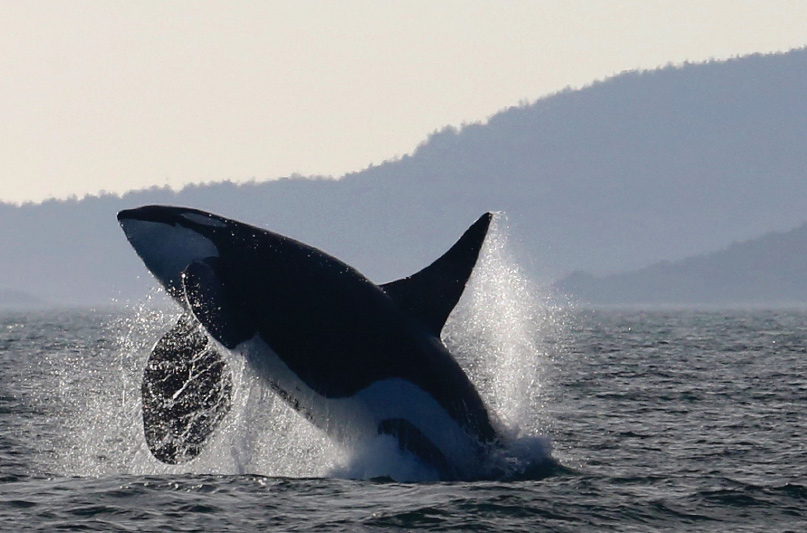 The world watches the critically endangered Southern Resident Killer Whales (SRKWs) with bated breath. At the time of this writing, the SRKWs are up two calves from the winter—a female named J56 and a male, J124 (Lucky)—and down three missing adults presumed deceased this summer: J17 (female), K25 (male), and L84 (male). According to the annual population survey from the Center for Whale Research, the current population of the SRKWs is 73 orcas.
The world watches the critically endangered Southern Resident Killer Whales (SRKWs) with bated breath. At the time of this writing, the SRKWs are up two calves from the winter—a female named J56 and a male, J124 (Lucky)—and down three missing adults presumed deceased this summer: J17 (female), K25 (male), and L84 (male). According to the annual population survey from the Center for Whale Research, the current population of the SRKWs is 73 orcas.
The SRKWs are a subpopulation of orcas who primarily roam the Salish Sea, making them highly visible to visitors and boaters while thoroughly studied by scientists. The resident orcas are made up of three family groups called pods: J, K, and L. While efforts by the likes of Washington state’s SKRW Task Force have put forth many sweeping orca-protection policies like restrictions on the private whale watching industry and investments in salmon habitat restoration, the effects on the population itself are still playing out.
The growing consensus among the scientific community is that the fundamental threat to the SRKWs is access to their main food supply: salmon. Specifically, this population of orcas favors Chinook salmon, which has had weak returns overall. For the Chinook salmon, their big threat appears to be access to adequate spawning habitat upstream. You may have noticed advocates pushing to remove dams on rivers like the Snake? They are motivated by this issue. Other factors possibly at play are pollution and vessel traffic, specifically vessel noise.
Out of the three dead orcas, J17’s death is especially concerning. Also known as Princess Angeline, she was a 42-year-old matriarch of J pod and mother to J35 (Tahlequah). Tahlequah is known globally as the mother orca who carried her dead calf in apparent grief more than 1,000 miles around Puget Sound for 17 days in 2018. The death of a matriarch is hard hitting, as the role of elder females in a pod’s survival is important.
As humanity at large continues to deliberate and act on the plight of our resident orcas, the great play goes on. Cascadia, and the world, watches. The two calves appear to be in good health.


